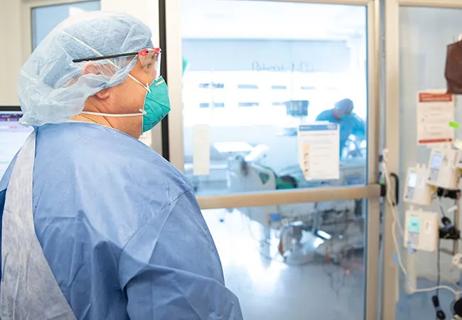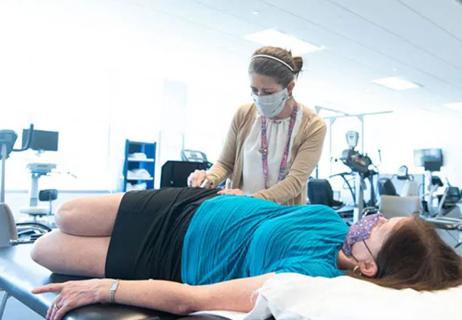Advertisement
Focused ultrasound offers a newer alternative to deep brain stimulation
Surgical intervention for movement disorders, although rapidly advancing with new technologies, is still woefully underused. Only about 10% of surgical candidates actually undergo surgery to improve their condition.
Advertisement
Cleveland Clinic is a non-profit academic medical center. Advertising on our site helps support our mission. We do not endorse non-Cleveland Clinic products or services. Policy
However, focused ultrasound and other new therapies may entice more patients to consider functional interventions for essential tremor and Parkinson’s disease, notes Benjamin Walter, MD, who leads the movement disorders and deep brain stimulation programs in Cleveland Clinic’s Neurological Institute.
Dr. Walter explores issues in surgical decision making in the newest episode of Cleveland Clinic’s peer-to-peer Neuro Pathways podcast. During the audio interview, he discusses:
Click the player below to listen to the podcast now, or read on for a short edited excerpt. Check out more Neuro Pathways episodes at clevelandclinic.org/neuropodcast or wherever you get your podcasts.
Dr. Walter: Focused ultrasound is a nonsurgical approach, yet it’s still an intervention on the brain. One limitation is that focused ultrasound can be done only on one side. So we target it to patients whose disease mostly impacts their dominant hand. They can’t write. They can’t keep food on a fork or spoon. They can’t drink from a cup. They may not be able to dress themselves or put on makeup. They might have trouble with their work, all because of that one hand.
If their impairment is in both hands, and they desire improvement in both hands, then deep brain stimulation is the only way to achieve that.
Advertisement
There is no hardware implanted in focused ultrasound. You don’t have a pacemaker, and there’s no upkeep necessary. In contrast, deep brain stimulation is a pacemaker for the brain. It’s programmable and adjustable, so we can change the settings and give patients further improvement as the disease progresses.
Deep brain stimulation is also reversible. Focused ultrasound is not. Some people have a healing phase in the first week or so after focused ultrasound, but if they have a side effect after that time, it tends to be permanent because focused ultrasound precisely places a lesion in the brain. Deep brain stimulation, while a surgical procedure, does not interrupt brain tissues except to pass a tiny wire into one location. Really, all the benefits and side effects of deep brain stimulation after the initial procedure come from turning it on, which is completely adjustable.
However, with deep brain stimulation, there’s a risk of a bleed in the brain, infection and hardware breakdown. Focused ultrasound doesn’t have those particular risks.
As you can see, there are pros and cons to the two procedures. One may be perfect for one patient and one may be perfect for another, depending on each patient’s treatment goals and risk tolerance.
Advertisement
Advertisement

Q&A with Brain Trauma Foundation guideline architect Gregory Hawryluk, MD, PhD

Q&A with newly arrived autoimmune neurology specialist Amy Kunchok, MD

A neurocritical care specialist shares what’s spurring growth of this new evaluation approach

Prehabilitation can help improve outcomes after spine surgery

Get ready for central vein sign and optical coherence tomography

How these new drugs fit into practice two years out from their first approvals

A conversation on the state of physiatry with the AAPM&R’s Vice President

Pharmacologic, procedural and surgical treatments abound